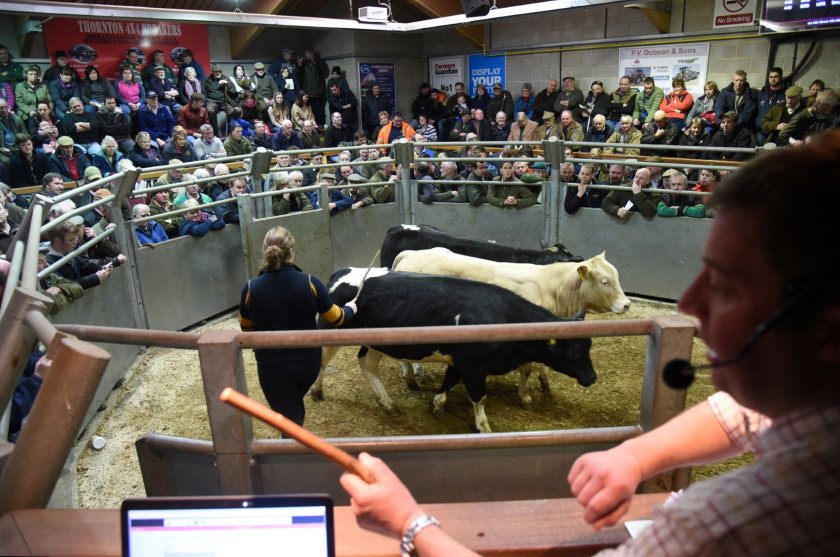
Turnover through the livestock markets of England and Wales has smashed through the £2 billion barrier for the first time, new figures show.
The Livestock Auctioneers’ Association (LAA), which represents auctioneering firms, said that the live sales system had remained resilient and transparent despite the dual challenges of Brexit and the pandemic.
Despite a slight reduction in slaughter stock figures across all species, although negligible against the overall drop in the national kill and deadweight figures, numbers remained strong in 2021.
This is particularly true within Wales, which has seen an increase across all species other than pigs, although pig numbers remained consistent from 2020 figures.
Store and breeding stock numbers followed a similar pattern in 2021, with a slight drop in cattle and sheep numbers through livestock markets in England, while again Wales recorded a slight jump in both categories, and a sharp rise in calf numbers.
Overall throughput numbers for all category of cattle rose by 3,000 to a combined 1,042,000 across England and Wales, while sheep numbers saw a small drop to 9,666,000, down 137,000 year-on-year.
Pigs and calves both saw an overall increase of 8,000 and 10,000 respectively, with 101,000 pigs and 230,000 calves sold through the live sales ring in 2021.
Crucially, despite the lower numbers, markets saw a huge increase of over £267 million, to break through the £2 billion turnover barrier for the first time. Overall the markets generated a turnover of £2,082,317,000.00.
Chris Dodds, LAA executive secretary, said: “Trade has been buoyant throughout the year for all types, while at the same time we have seen forward contracts and integrated supply chains fail across the agricultural sector.
“Supply and demand are key to everything, and when there has been a global lack of sheep meat worldwide, for example, the markets need to adjust accordingly."
He added: "The dynamic nature of the live sales system allows us to react as an industry, working on behalf of the farmer to secure the best price for their stock.
“The past two years re-emphasised the importance of the live sale ring, providing a platform for farmers to present and sell their stock at a fair market price,” he said.
In 2021, this has been particularly seen in the finished lamb market, where on numerous occasions the live prime lamb price has been superior to its deadweight equivalent.
On several occasions, deadweight firms have attempted unsuccessfully to reduce the farmgate price.
